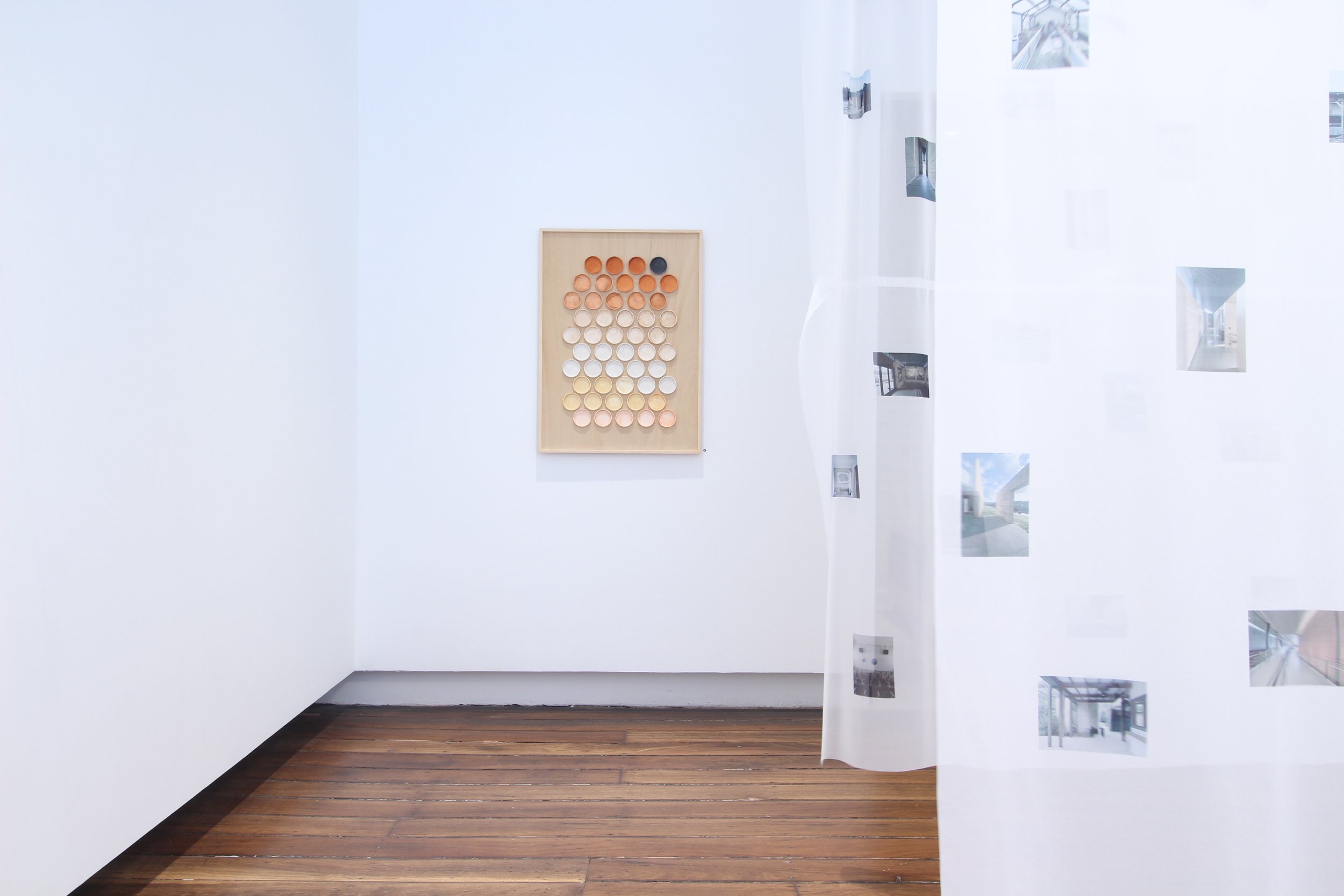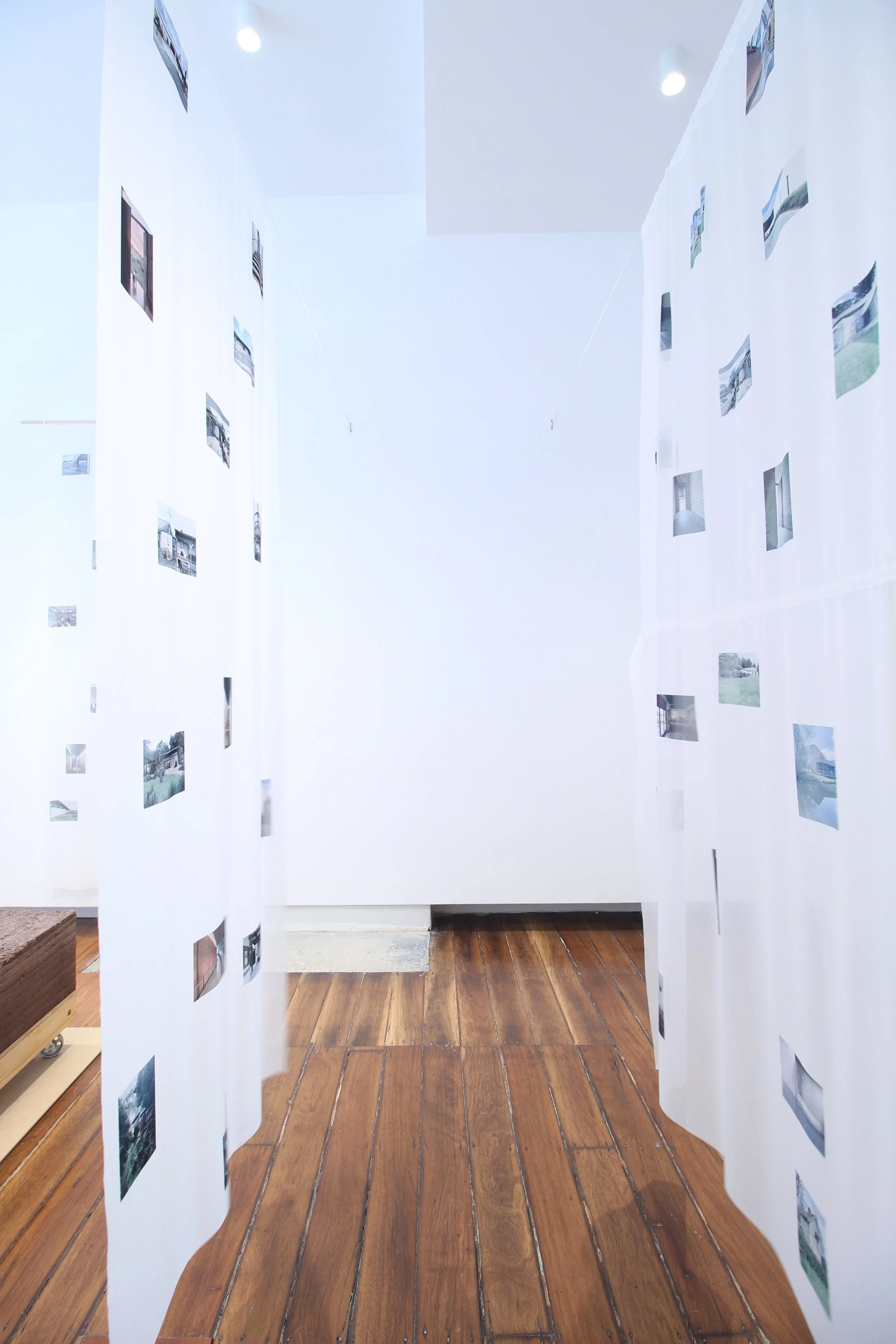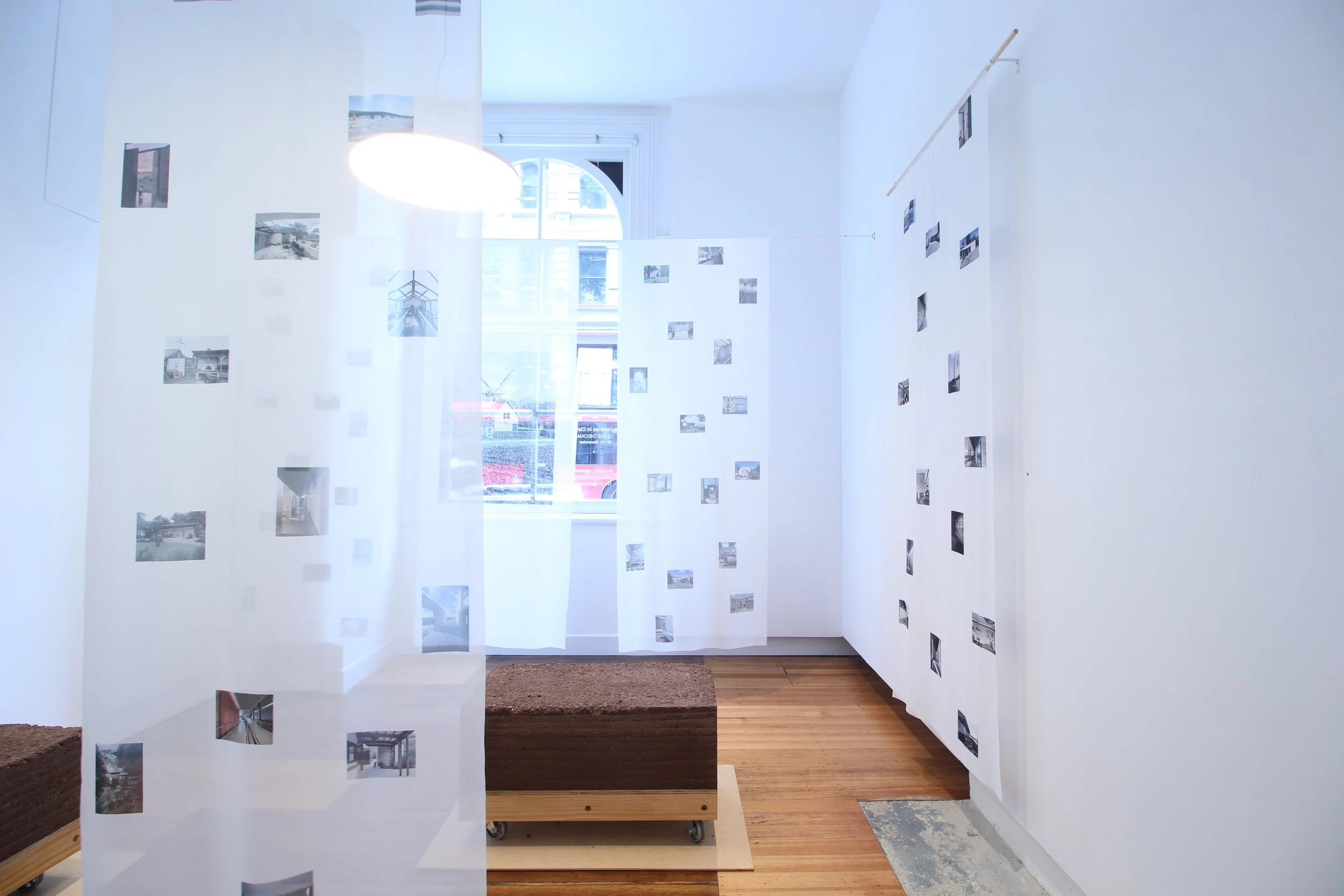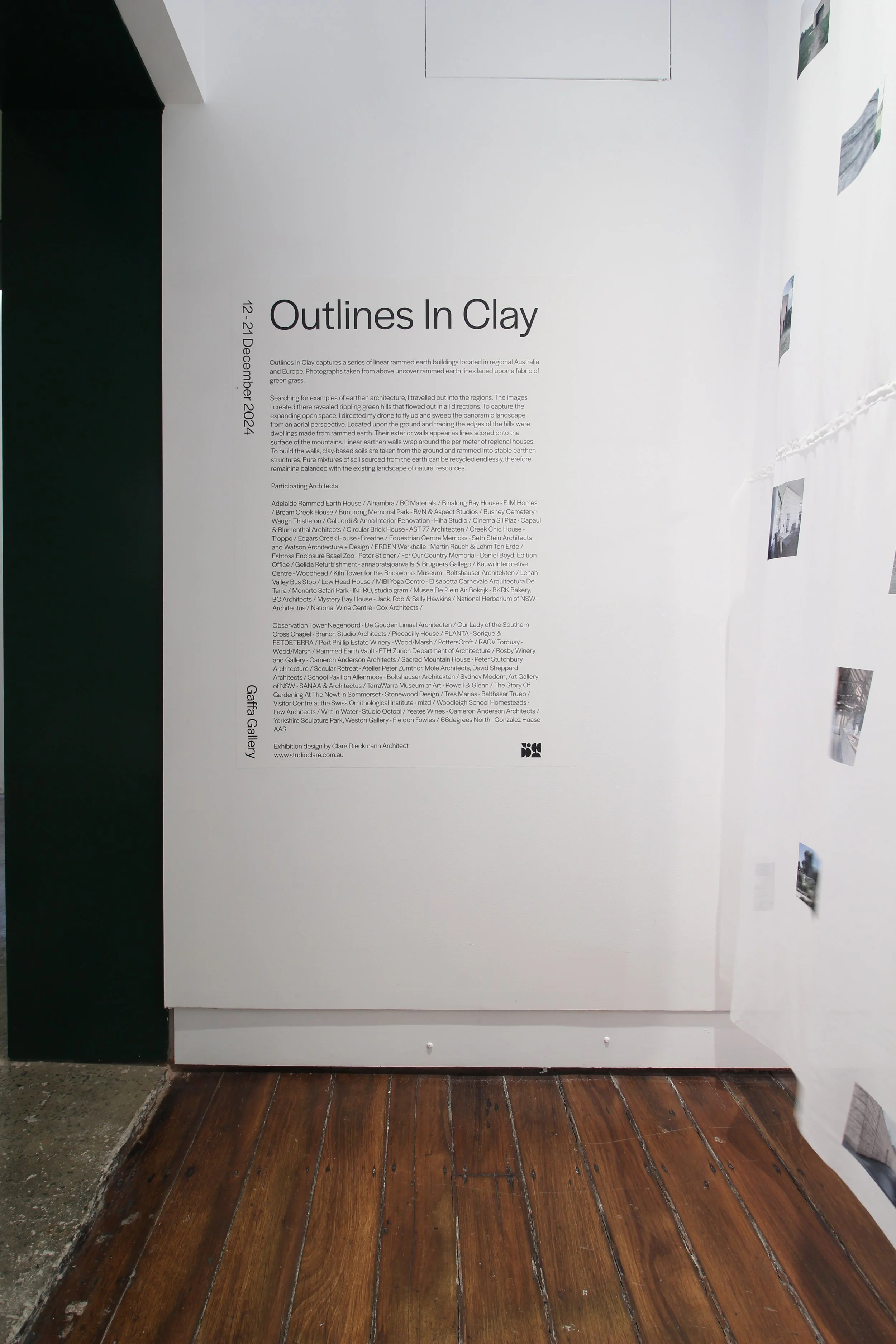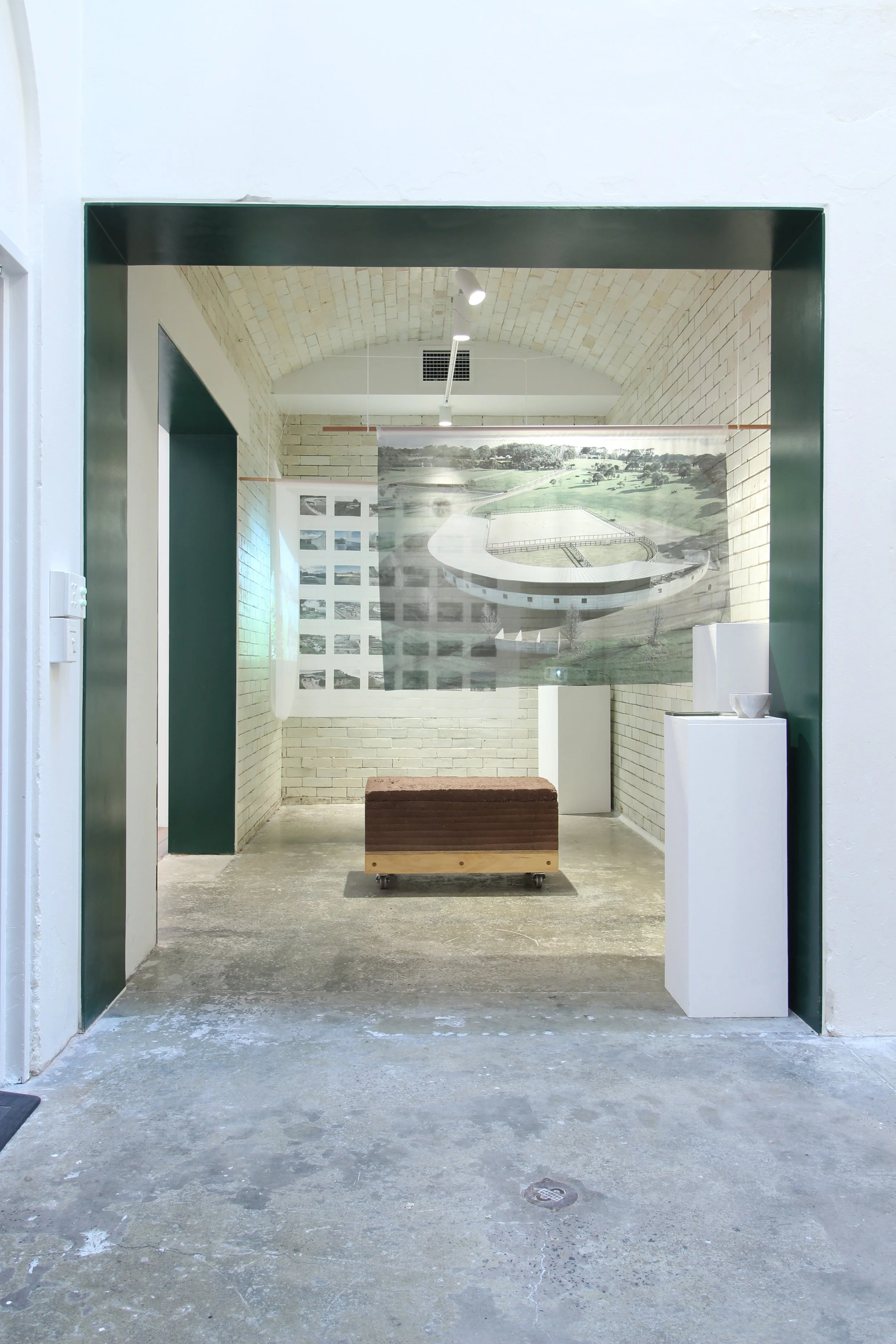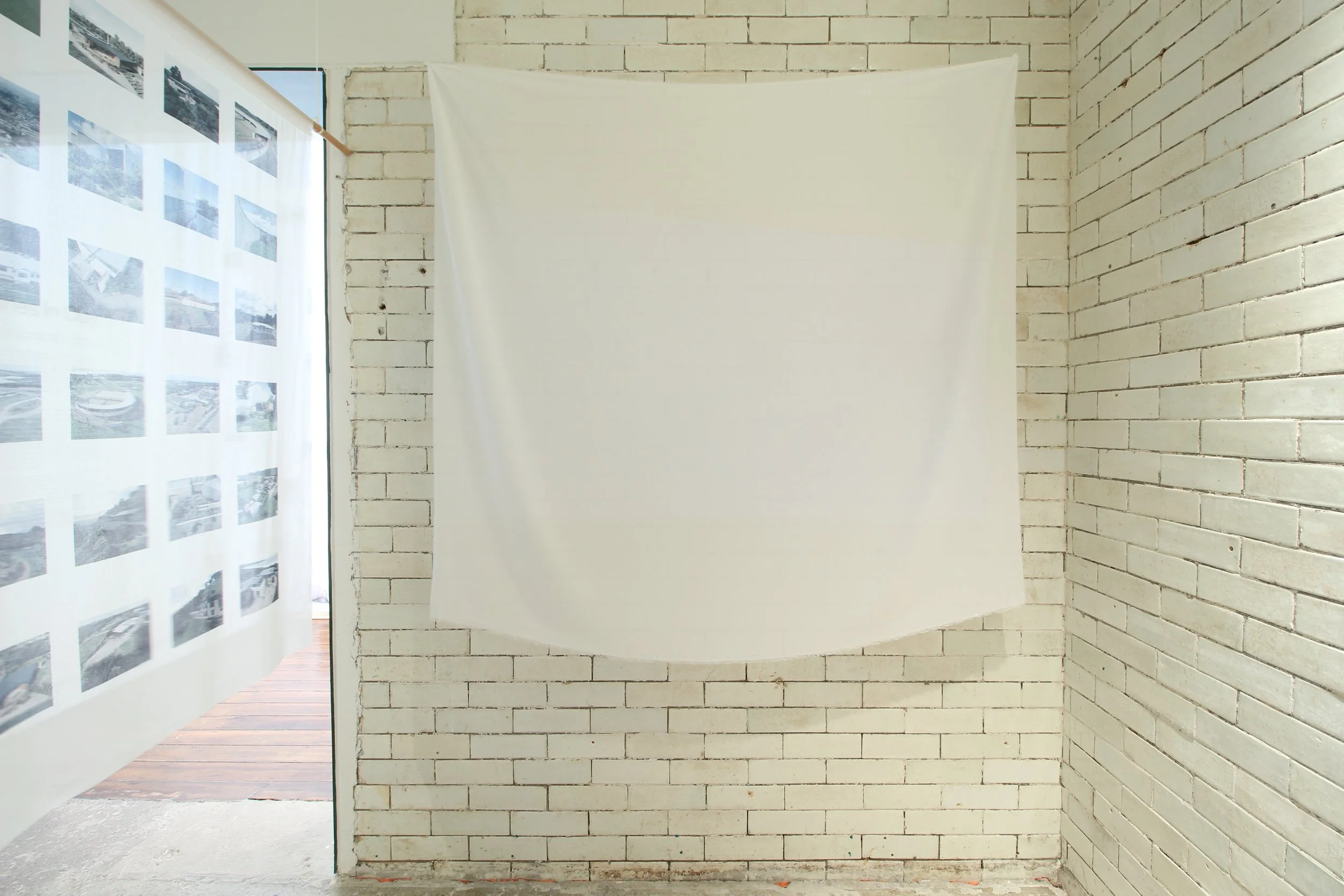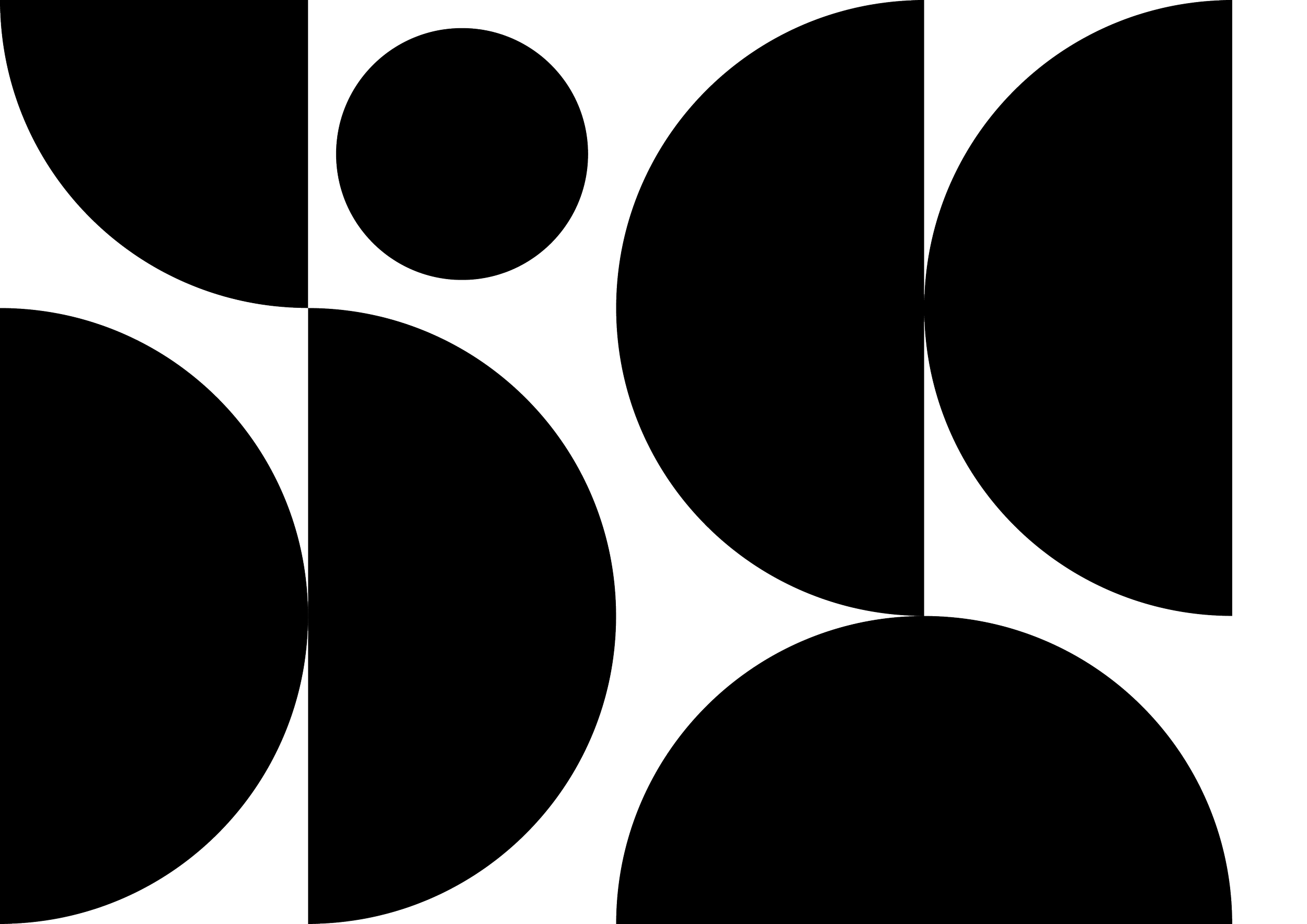Year: 2024
Type: Exhibition
Location: gaffa gallery
Photographer: Clare Dieckmann
Country: Gadigal
Searching for examples of earthen architecture, I travelled out into the regions. The images I created there revealed rippling green hills that flowed out in all directions. To capture the expanding open space, I directed my drone to fly up and sweep the panoramic landscape from an aerial perspective. Located upon the ground and tracing the edges of the hills were dwellings made from rammed earth. Their exterior walls appear as lines scored onto the surface of the mountains.
Linear earthen walls wrap around the perimeter of regional houses. To build the walls, clay-based soils are taken from the ground and rammed into stable earthen structures. Pure mixtures of soil sourced from the earth can be recycled endlessly, therefore remaining balanced with the existing landscape of natural resources.
Outlines In Clay
Contemporary rammed earth buildings present an alternative material choice for Australians. Earth can be recycled endlessly, making unaltered mixtures of earth the most sustainable option. The sustainable potential of earth raises awareness towards where our broader construction industry chooses to extract materials from and our impact on the natural environment. Rammed earth buildings are often located within rural and regional settings set amongst beautiful landscapes of wine-growing vineyards in nutrient-rich soils. Australian rammed earth walls are coloured by the unique mineral composition of soil stamped beneath our feet.
Funding generously provided by the NSW Architects Registration Board's Byera Hadley Travelling Scholarship, provided Clare with the opportunity to research rammed earth architecture in detail. The Byera Hadley Scholarship took her to rural and regional areas around Australia and Europe, where buildings are made from local soils unique to their landscape. The goal of Clare's research was intended as a first-hand study of rammed earth structures rather than an instruction manual for building with the material. Her research methodology included interviews with rammed earth experts, case study analysis of the history of earthen architecture and an extensive collection of in-person site visits. She hopes her research will provide a medium for Australians to innovate with earth.
This study on rammed earth architecture has given Clare significant knowledge of earthen buildings. Her knowledge of the material does not mean rammed earth is suitable for every project, however, the principles of sustainability and materiality are central values to Clare's practice.
Her experiments with clay initiated in the modelmaking studio inspired her to undertake this project on rammed earth. She was drawn to clay's flexibility, malleability and pliability, being able to shape the material into virtually any form with bare hands. Envisioning what building with clay might look like on a larger scale drew her to this study of rammed earth architecture. In this way, life-sized built form could take on the sustainable advantages of clay.
Media
Book: Terracotta _ Remixing Australian Rammed Earth Architecture
Video: Artist in conversation with Kate Goodwin
